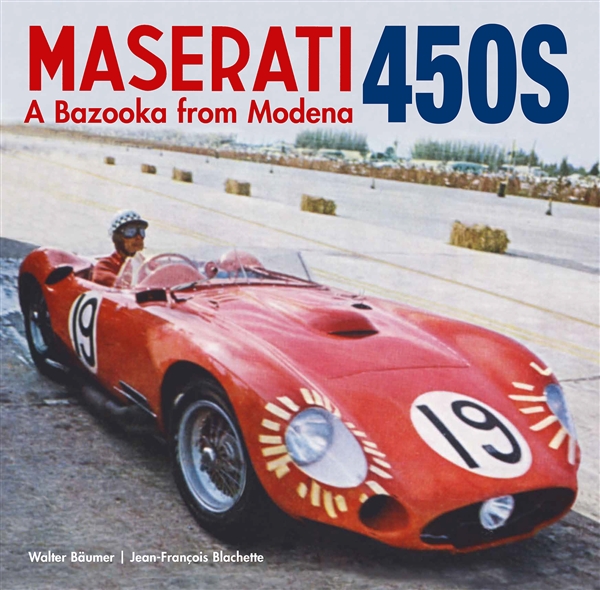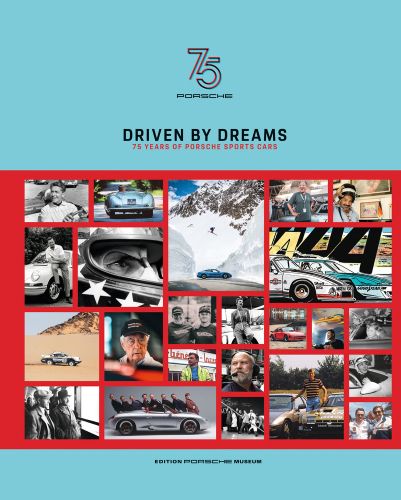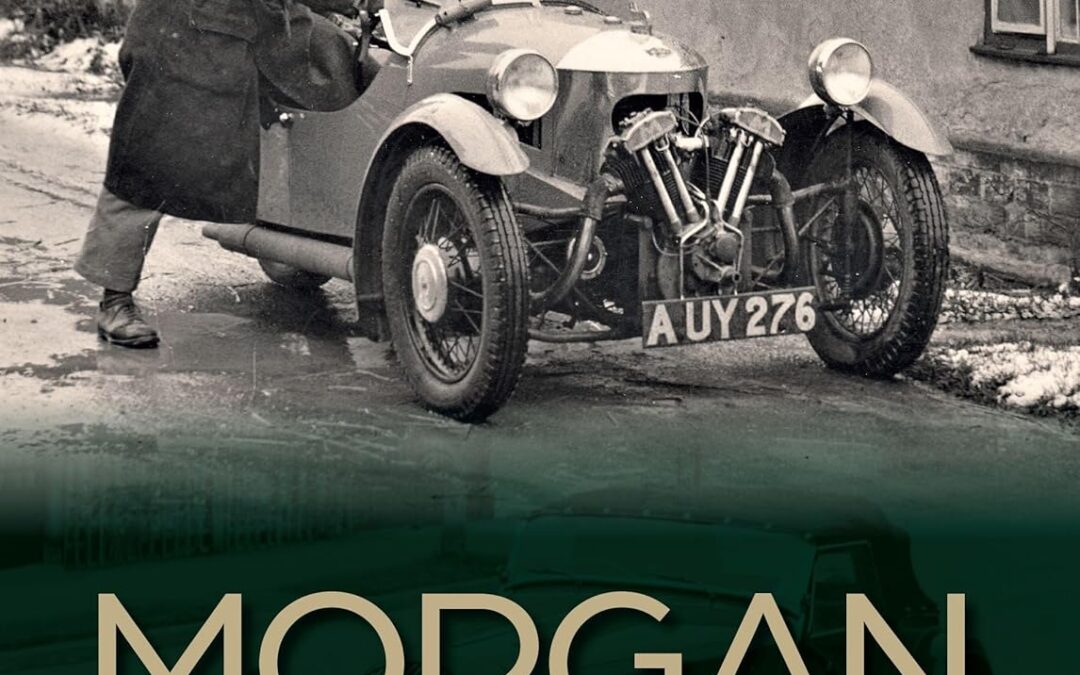
This books tells the amazing story of the Morgan Motor Company, from the primitive, but very successful cyclecars of Edwardian times, through to the iconic British sports cars of the Classic period in the 1960s. Morgan defied conventions, survived economic hardships, resisted take-over bids and carried on in its inimitable way, hand-crafting ‘proper’ cars out of the historic row of workshops in the spa town of Malvern. Morgan – An English Enigma takes an in-depth look at the Morgan Motor Company during the Vintage and Classic periods, benefitting from access to previously unseen documents and drawings, and featuring 500 images, over half of which have never before been published. This fascinating story will appeal to those with an interest in motoring history, the motor sport enthusiast and anyone who appreciates fine British sports cars.
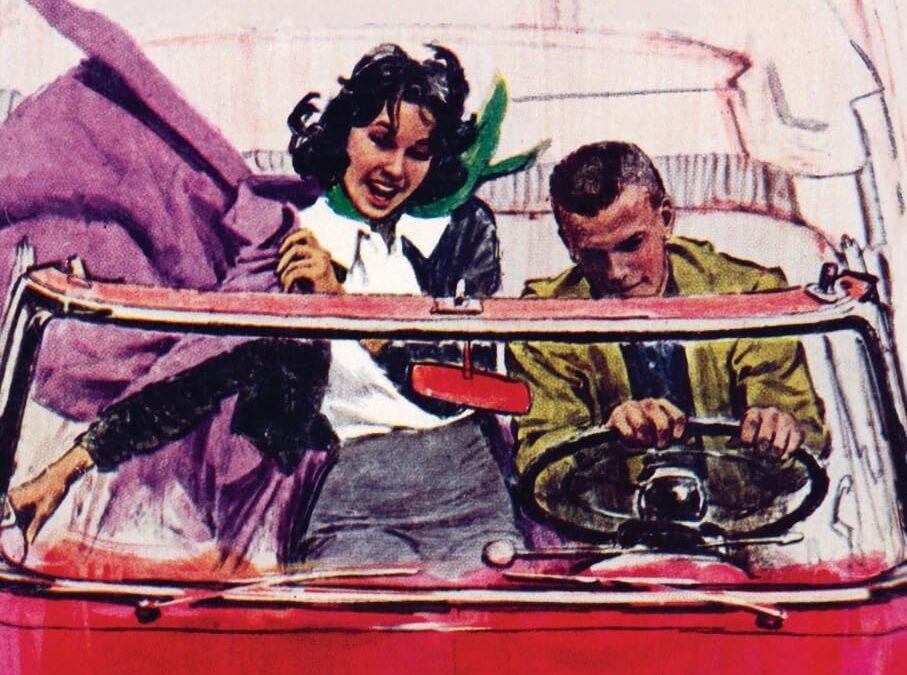
Can a teenager afford a car? Even a cheap old one?
Woody Ahern thought he could. He had a job after school, he had saved a little money, and, as he pleaded with his father, the main reason he and the other members of his car club wanted a car was so that they could work on it.
Woody would get his car—for forty dollars. He named it Sidekick, and from the moment the thirteen-year-old wreck became his very own, Woody lavished on it all his love and devotion. He was sure that when it was done it would be the most beautiful car imaginable. He could even see himself driving Sandra to the spring dance . . . but it would take a lot of work before Sidekick was safe to drive. And before that work was complete Woody would come to learn a great deal—not only about cars, but also about human relationships and his own goals in life.
Road Rocket captures the heart and soul of 1950s hot rod culture. The lean, mean story follows Ahern’s hard-driving path to rodding redemption, riffs on some meaningful messages, and unleashes a fast and furious read. Dig in and learn what millions of readers already know; the world’s most popular hot rod novel is a hopped-up high-horsepower thrill ride.
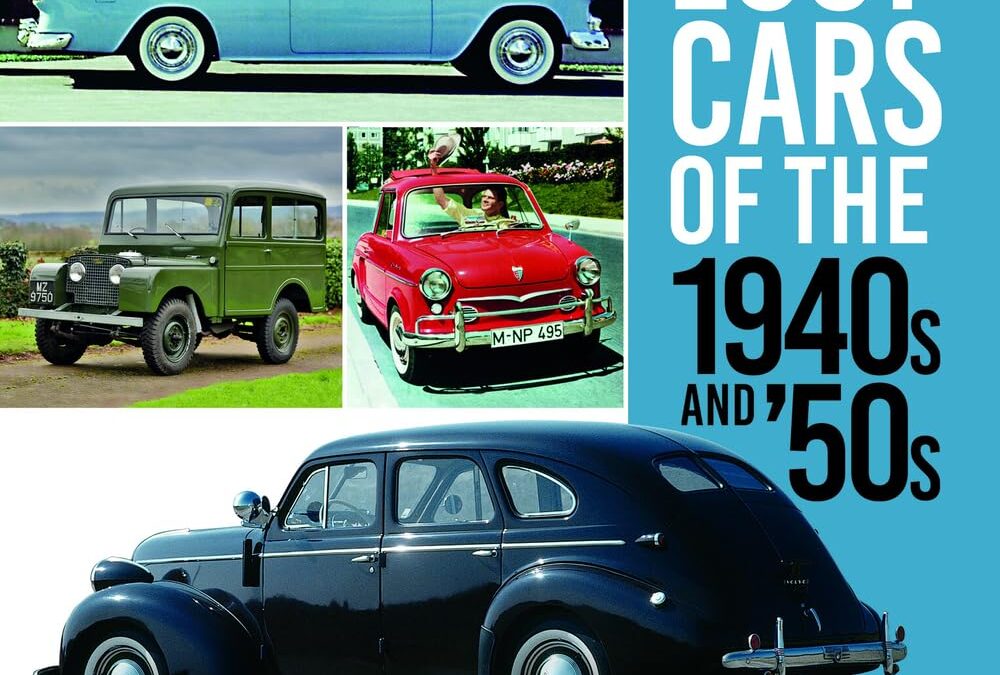
Sixty diverse cars, sixty fascinating stories, sixty contrasting specifications, but just one uniting factor: they’re all forgotten, neglected or misunderstood classics. In this engaging new book, these casualties and sideshows of motoring history from around the world finally get the recognition they deserve. Revisit daring new designs, interesting new economy cars, affordable sports cars, and some extraordinary luxury cars, from post-war austerity to the you’ve-never-had-it-so-good era, during which these elusive machines briefly shone. It was a time when engines gained more power, suspension became more cosseting, the chassis frame became a thing of the past, and styling followed jet fighters and space rockets. Giles Chapman, award-winning author of Lost Cars of the 1970s, has gathered together an all-new selection of intriguing strays of the car world, superbly illustrated with rarely-seen archive and contemporary images that bring all these cars back to life… even if they misfire once again in the process!
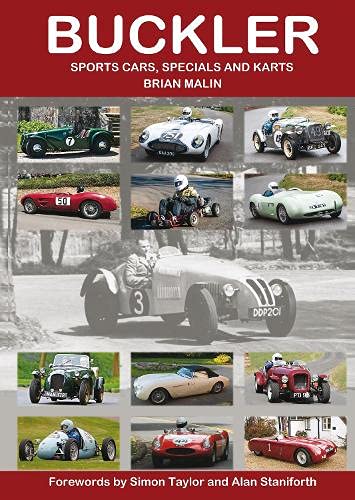
Although they were born 18 years apart, Derek Buckler and Colin Chapman were contemporaries when it came to designing and building ground-breaking sports cars in the late 1940s and early ’50s. They had much in common. Both were innovators, especially in areas of chassis design and improving the handling characteristics of their cars. Both founded successful companies and both died relatively young, Chapman in December, 1982, at the age of 54, and Buckler in 1964 at just 53 years of age. Yet, while Chapman’s Lotus went on to achieve worldwide fame, the name Buckler remains comparatively little known.
Special building was popular in the 1950s, mostly using ‘donor’ chassis from Austin 7 or Ford or simple ‘ladder’ frames but Buckler offered a multi-tubular space frame which was both stronger and lighter and, moreover, available in different models to suit different applications. He was also always ready to adapt his products to his customers’ requirements. In all of this, Buckler’s aim was to provide the impecunious enthusiast with a versatile sporting vehicle which could be used as daily transport during the week and, at weekends, in a wide range of motor sporting events from trials and driving tests to out and out racing. Often, however, the resulting Special would carry a name that concealed the Buckler contribution and a major part of the significance of Malin’s book and the vast amount of painstaking research put into it by its author is that much of that contribution is now revealed.
Buckler also, of course, made a range of complete cars starting with the versatile Mk5 and 6 and going on to encompass DD1 and DD2 with De Dion rear ends and the BB100 with backbone chassis introduced considerably before Lotus’s Elan and their other similarly based models. When karting became popular in the early 1960s, Buckler’s space frame technology found another application for which it was ideal and it became a major player in this burgeoning branch of motor sport. Buckler was also successful with its range of accessories including engine and transmission components and most notably its much admired close-ratio gears.
Brian Malin, the author, first owned a Buckler car in the 1970s and today competes in his Mk 5 in hill climbs and other events. He is an active member of the Buckler Register as well as the British Historic Kart Club and is often to be seen racing or demonstrating his Buckler kart so he is well placed to compile this comprehensive history of all things Buckler. It was first made available in loose-leaf form as long ago as 1990 but this is its first publication as a fully-fledged book, revised, updated and with additional material. Chassis design guru – and Buckler owner – the late Alan Staniforth provided the original foreword and this has been updated and included along with a new foreword by commentator and doyen of motor sport journalists, Simon Taylor.
The fourteen chapters begin with ‘Buckler and the Company’, cover the production and racing cars with some individual histories, the Buckler accessories including one chapter on the badges alone, overseas distribution – New Zealand was a particularly strong market for Buckler – and a fascinating section on the car advertisements before going on to cover the kart story in similar detail. The same number of appendices include reproductions of road tests, articles written by Derek Buckler, specifications of close-ratio gears and Buckler-tuned Ford engines, kart track tests and even one on Buckler letterheads. Malin’s work is truly encyclopaedic and therefore remarkable value for money not just as a reference on the Buckler marque but for its entertaining insight into the world of amateur motor sport of its time. The hundreds of illustrations range from reproductions of high quality contemporary and recent photographs to some admittedly lower quality originals, some of them obviously retouched to improve clarity, whose inclusion is well justified for their essential contribution to the Buckler story.
Brian Malin is to be congratulated for his perseverance in finally bringing to publication a book which is, to all intents and purposes, the full Buckler story.
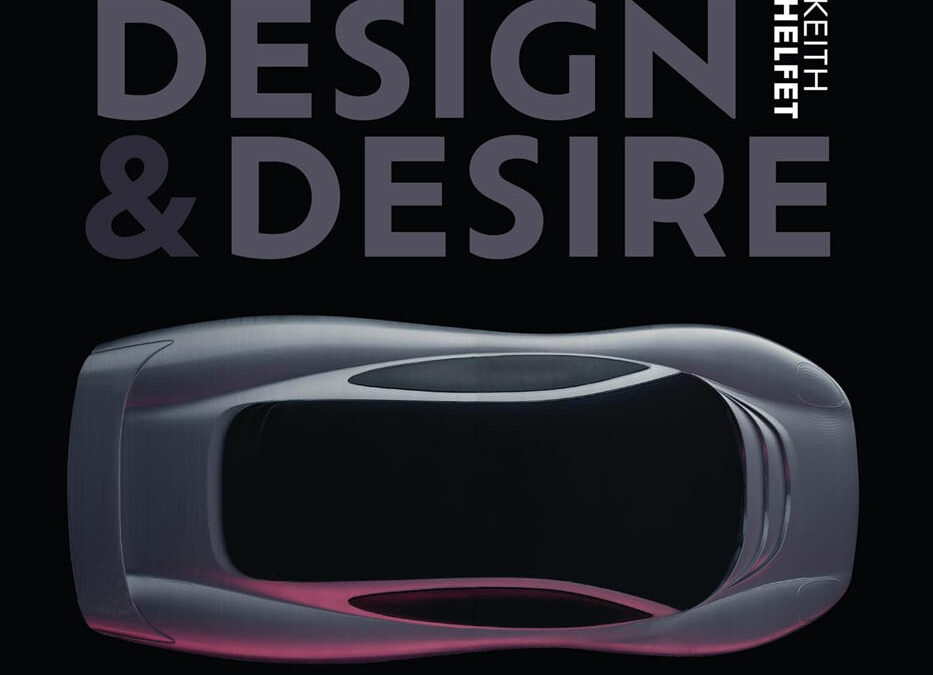
When Keith Helfet embarked upon an ambitious project to create a new body shape for a secondhand Triumph Spitfire using little more than foam offcuts and plaster of Paris, a life as one of the world’s most successful automotive designers seemed like an impossible dream. And yet that’s precisely what he would become.
After studying at London’s prestigious Royal College of Art, the South-African born youngster secured a job at Jaguar, where he would meet his mentor – marque founder Sir William Lyons. Thanks to his encouragement and guidance, Helfet would go on to create a number of iconic designs such as the XJ220 supercar, the XK180 and the beautiful F-type concept created in 2000.
With diversions into medical imaging, product design, power-assisted bicycles and electric vehicles, Design & Desire offers a personal insight into a unique and varied career that has spanned more than four decades – and counting…
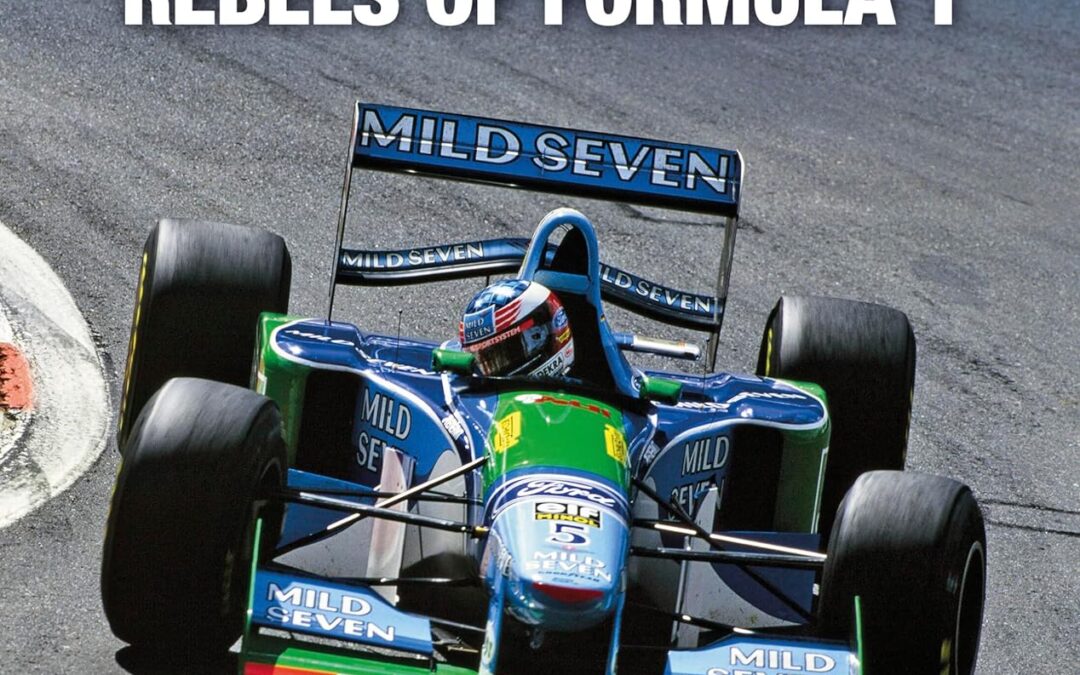
Unconventional, flamboyant, ground-breaking, colourful, controversial — the Benetton Formula 1 team was all of those things.
Defying perceptions as the rebels of Formula 1, Benetton achieved great success, particularly in the two glorious seasons of 1994 and 1995 when the team swept aside the big names — Williams, McLaren and Ferrari — to claim back-to-back World Championship titles for up-and-coming Michael Schumacher. This book tells the entire 1986–2001 history of the Benetton team for the first time with insightful contributions from many of the key participants, including Flavio Briatore, Alessandro Benetton, Pat Symonds and Rory Byrne.
- Beginnings: after three seasons in F1 as a sponsor, Benetton purchases ailing Toleman and creates its own BMW-powered team for 1986, taking a first win that year with Gerhard Berger.
- Growing in stature: with Flavio Briatore arriving to run the team and using Ford engines, Benetton edges towards consistently strong performances, including two consecutive wins for Nelson Piquet at the end of 1990.
- The key driver: the inspired signing of Michael Schumacher takes Benetton closer to glory during a 1992–93 high-tech period that sees the Williams team reign supreme.
- The breakthrough year: Following tragedy, black flags, disqualifications, a pitlane inferno and political maneuvring, the tumultuous 1994 season ends with Schumacher sealing the World Championship title for Benetton after a controversial clash with rival Damon Hill.
- The best year: Transferring to Renault engines, Benetton dominates in 1995, Schumacher taking a second consecutive crown thanks to nine wins and Johnny Herbert supporting to help deliver the constructors’ title too.
- The hangover: After Schumacher’s departure to Ferrari and the loss of factory Renault engines, Benetton struggles to maintain its status in 1996–97 with Gerhard

One day in early 1960, the French consulate in Detroit organised a cocktail party. Because of his knowledge of the French language, designer Henry De Ségur Lauve was invited along as an interpreter. At the party, he met Pierre Bercot, general manager of Citroën. They got talking about Citroën design and Bercot invited De Ségur Lauve for a meeting in Paris. That conversation went positively and in May 1960 De Ségur Lauve signed a cooperation agreement with Citroën to produce design proposals that suited the taste of American consumers.
From then on, De Ségur Lauve came out with a fair number of sketches with a decidedly American influence for new models. The first designs are still sometimes reminiscent of facelifted DSs, but soon they look more like spacecraft than cars for everyday use. De Ségur Lauve had access to Citroën’s design studio and could see what the designers were working on, which allowed him to create ‘Americanised’ variants based on those models. Examples found in this book include proposals for the later Citroën CX and the interior of the Citroën SM.
Much of De Ségur Lauves spectacular designs ended up in the Citroën archives and were forgotten. After more than 50 years, this book showcases his work prominently for the first time. A unique piece of Citroën history!
The texts in the book are in Dutch, French and English.
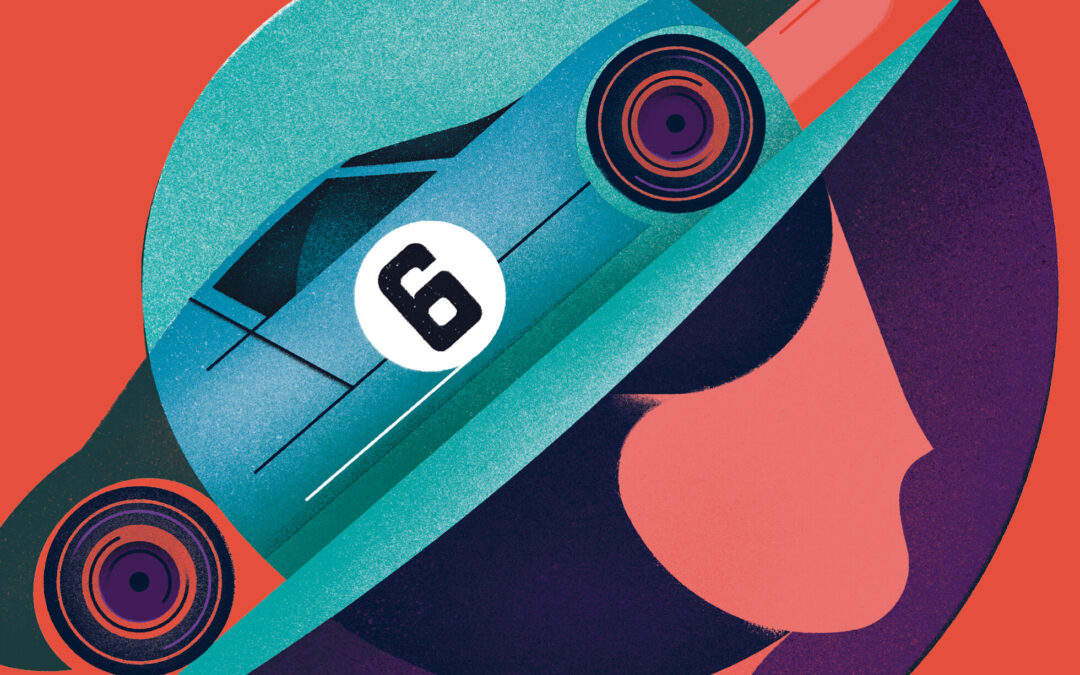
Concours Year 2023: The only book to record every class and Best in Show Winner from over 50 of the greatest global concours of 2023.
Now in its fifth edition, The Concours Year, presented by Weathertech, is a celebration of the greatest Concours d’Elegance events from around the world. The book includes Special Awards, Best in Class and Best in Show results from more than 50 concours. The Concours Year is the most comprehensive review of the concours scene published. Nearly 300 pages, hardbound and with more than 1000 images of some of the world’s most important cars, this is a book to treasure.
A Year in Concours: The very best of 2023
- Class and Best in Show Winners from Concours events in 2023
- Concept Lawn
- Concours People: The Entrant – Fritz Burkard; The Judge – David Lillywhite; The Restorer – Clark & Carter; The Organiser – Byron DeFoor
- Highlights and Trends of 2023
- Concept Lawn (new concept cars shown at concours events throughout the year)
- Looking Ahead to 2024
- The India Experience – a behind the scene look at the 21 Gun Salute Concours d’Elegance in Delhi
- Concours Judging Rules Explained – a judging rules deep-dive written by the experienced judge Chris Kramer.
Also introducing the inaugural Concours Year Awards.
And documenting Class and Best of Show results from the following Concours:
Cavallino Classic Middle East, 21 Gun Salute, Cavallino Classic Palm Beach, Concours in the Hills, Intermarque Concours d’Elegance, The Amelia, Sydney Harbour Concours, La Jolla Concours, Motorcar Cavalcade, Lugano Elegance, Cavallino Classic Modena, Concorso d’Eleganza Villa d’Este, Concours on Savile Row, Valetta Concours, Greenwich Concours d’Elegance, London Concours, Cincinnati Concours d’Elegance, Concours d’Elegance Suisse, Dinard Elegance, Rodeo Drive Concours, Philadelphia Concours d’Elegance, Poltu Quatu Classic, Heveningham Concours, Cartier Style et Luxe (Festival of Speed), Zurich Classic Car Award (ZCCA), Quail, A Motorsports Gathering, Pebble Beach Concours d’Elegance, Misselwood Concours d’Elegance, San Marino Motor Classic, Salon Privé, Classic-Gala Schwetzingen, Concours of Elegance Hampton Court, Radnor Hunt Concours d’Elegance, Concours d’Elegance Tegernsee, Antwerp Concours d’Elegance, Cobble Beach Concours d’Elegance, Ironstone, Detroit Concours, St Michaels, Ascona Concours d’Elegance, The Boston Cup, Audrain Newport Concours and much more!

The story of a boy with a big four-wheel dream
There are men who fall in love with a dream when they are young and do everything they can to make it come true. Romano Artioli is an entrepreneur pursuing his desire to revive the world’s most prestigious automobile brand, Bugatti. With passion and dedication, he achieves this goal. Born in Mantua, birthplace of Nuvolari, the most famous race car driver of all time, Romano opens his first auto service centre in Bolzano at the age of eighteen, buys a hydraulic test bench and begins overhauling engines, immediately demonstrating great skill.
And he founds dealerships, imports cars and becomes president of the local automobile club. He understands the importance of going all out to meet the demands of his customers, who become his friends and help him sell cars.
He convinces Enzo Ferrari to entrust him with management of the brand not only in the Triveneto, but in southern Germany as well.
After amassing experience for years travelling the world, it’s time for him to make his boyhood dream come true: he charms the French government and arranges for the sale of the Bugatti brand.
Then, having been abruptly prevented from selecting a powerful partner among the many who were interested in developing Bugatti and ensuring its future as an independent brand, he acquires the crisis-ridden Lotus Group and rapidly restores it to its former grandeur.
There, he introduces new models with great success, such as the special Lotus Elise, named after Romano’s young granddaughter.
Exploiting the unique untapped potential of his technicians, who work with passion and total commitment. In the mid-nineties, the Bugatti EB 112 is named “the world’s most beautiful sedan”.
But as in a classic thriller, just when everything seems to have turned out right comes the sneaky and unexpected twist that changes everything. With endless twists and turns and a long line of bankers’ traps, lawyers’ scams and ravenous businessmen, Bugatti & Lotus Thriller tells the story of a great dream of genius and creativity that stirs passion in every petrolhead the world over.
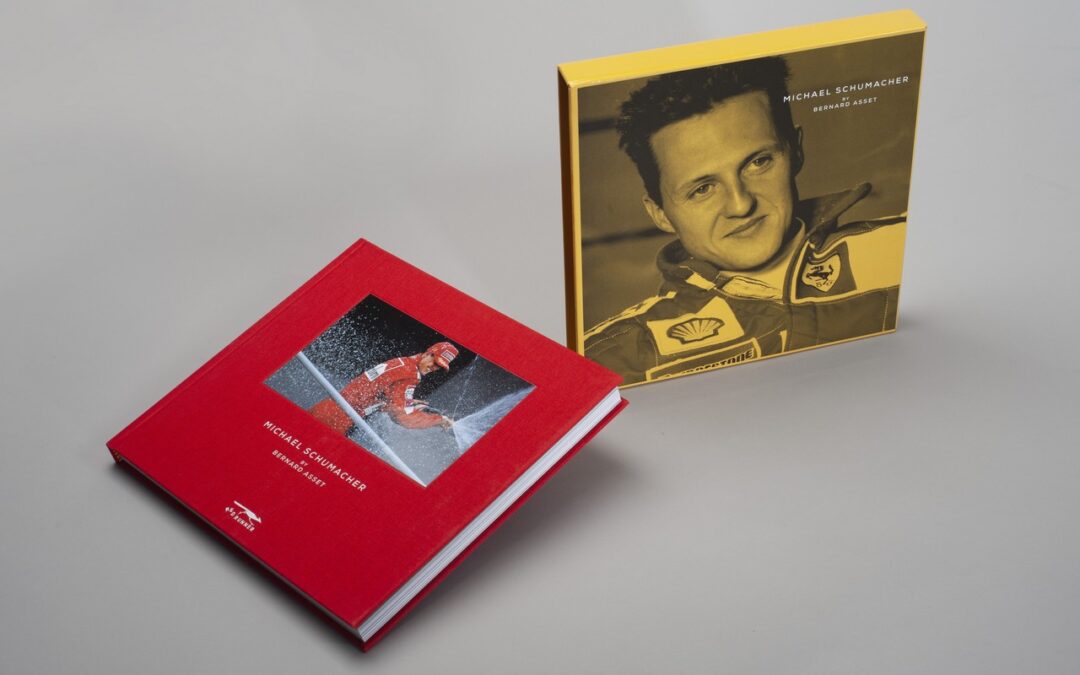
Senna, the legend, the only one! Mentioning his name gives me goose bumps… But then, when Bernard Asset told me he wanted to do the 4th book of his collection about him, I had my doubts… Another book about the legendary Brazilian driver? What hasn’t been done about Senna? I only accepted the challenge because Bernard unveiled some unique pictures, never been seen anywhere. And what about the testimonies? All the people that knew him well had special anecdotes to tell.
So I think we made a very, very special book, and you’ll discover it when you’ll read it. As ever, the book is a limited and numbered edition.
- Unique contact sheet signed by Bernard Asset.
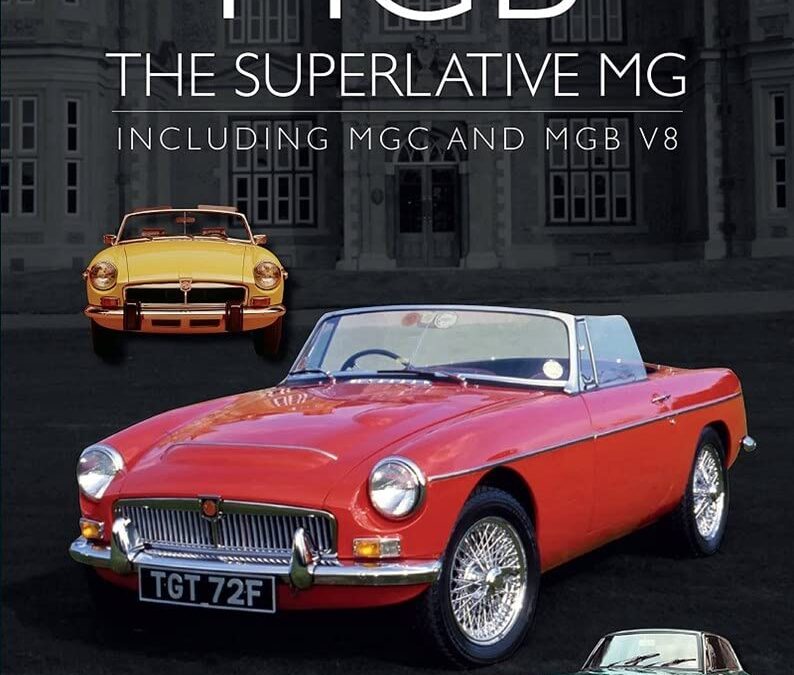
Launching in 1962 and in production for eighteen years, the MGB became one of the most successful sports cars the world has ever known. MGB – The Superlative MG describes how the MGB arose principally from the ideas of one man, MG’s Chief Engineer, Syd Enever, how it was designed and developed, how it survived and thrived, and how it became the classic car still so highly regarded today. With over 620 archive and specially commissioned photographs, including previously unseen models, sketches and prototypes, and packed with tables and data, it includes how the drive to replace the revolutionary MGA led to the development of the MGB, with the key personnel involved at each stage. It goes on to describe the genesis of the Pininfarina-refined MGB GT, and the Ferranti MGB hardtop as well as the MGC and incredible lightweight MGC GTS – including, for the first time, what became of the factory cars when first sold. The story of Ken Costello and his MGB V8, and the factory MGB GT V8 is covered along with the evolution of the MGB through the difficult period of British Leyland to the tragic end of the Abingdon factory. The full story of the lost cause of the Aston Martin Lagonda bid to rescue Abingdon and the MGB – including political and commercial insight is given along with detailed insight from many people who were closely involved in the creation, development and ultimate demise of the MGB. The motorsports story of the MGB family, including race details, insiders’ stories and key racer biographies is covered. Finally, the sales and marketing of the MGB in its two principal sales markets, including the clever advertising campaigns and commercials is covered and details of the overseas assembly of the MGB, in particular Ireland and Australia.

On 2 August 1990, Saddam Hussein’s armed forces invaded and occupied Kuwait. A swift international response followed, which, led by the United States and the United Kingdom, saw the formation of a coalition that formed the largest military alliance seen since the end of the Second World War.
Among the many RAF units deployed under Operation Granby, the codename given to the British military operations during the conflict, was 41 Squadron, with elements taken from 54 Squadron and 226 OCU, which was equipped with the ubiquitous Jaguar GR1 single-seat all-weather tactical strike and ground-attack fighter. In late 1990, the squadron duly despatched a total of twelve aircraft, which soon became known for their distinctive desert pink camouflage, and twenty-two pilots from their base at RAF Coltishall.
Initially conducting low-level strikes, for which the Jaguar Force had always been intended, over the weeks that followed 41 Squadron switched to more unusual medium-level missions. In total, the men and machines of 41 Squadron conducted a total of 617 sorties during Operation Granby.
To complete this remarkable description of 41 Squadron’s part in the liberation of Kuwait, the author has interviewed a number of these pilots. As well as these veterans’ personal reflections, Danny Burt also explores the Jaguars’ record on air-to-ground combat and its performance in theatre, the various upgrades the type receive, and the unique nose art that each aircraft carried. Many of the pictures in this highly illustrated publication have never been published before.
The story is completed by the recovery by the author of one of the Jaguar GR1s flown in the Gulf War Rescued from an Army range in South Wales, the aircraft was moved to RAF Coningsby where its restoration, including the return of its Operation Granby camouflage, is underway.
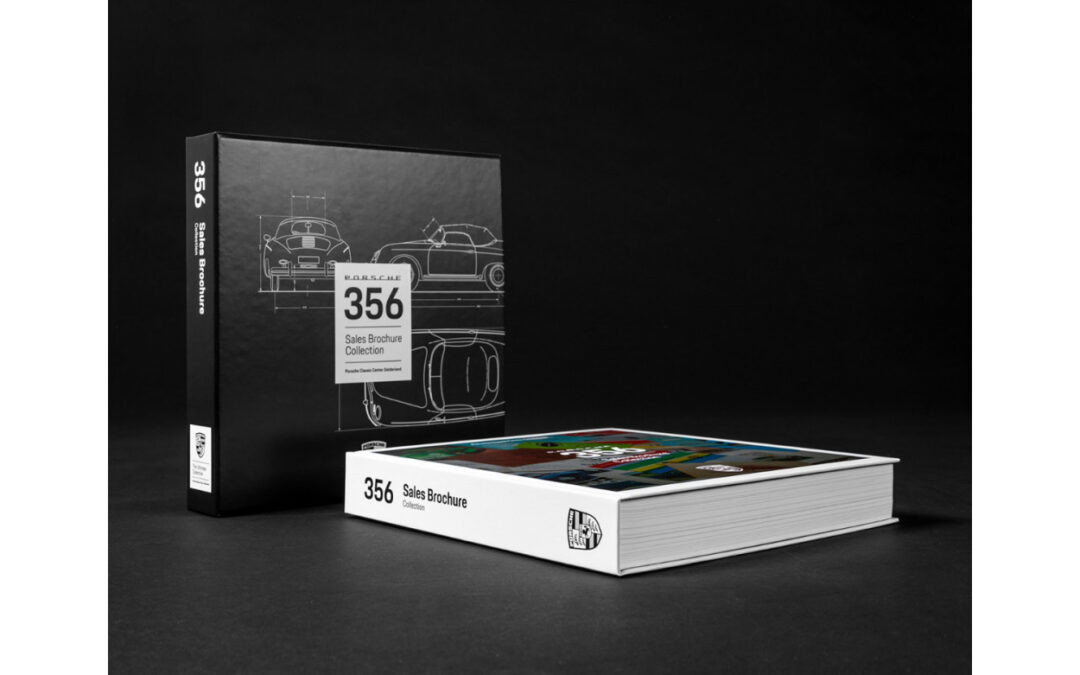
This unique book contains 576 pages of Classic Porsche 356 brochures.
The brochures date from 1948 to 1966. This book includes price lists,accessories and various color schemes.
Hardcover book in slipcase
Dimensions 280 x 280 x 50 mm
Text in English
SEE LIMITED EDITION HERE

This book is unique. It not only tells you how carburetors work – but more importantly – why.
Carburetors, like many parts of a car, are not stand-alone devices. A carburetor’s “success” is highly dependent on many related components working together, just like the members of a football team must work together in order to win. We will discuss all aspects of the fuel and air systems of a gasoline engine from the gas tank until the air-fuel mixture enters the combustion chamber. To be able to effectively understand, diagnose and repair carburetors, it is important to understand all of these inter-related systems.
This book will complement the various service manuals you have for your cars. Some books have very good, detailed carburetor descriptions, while others are limited in the discussion of how the particular carburetor works. This book is not intended to replace these manuals, but to give you fundamental knowledge that will apply to virtually all carburetor designs. This book also includes more than just carburetor information, since it is the complete fuel, air, ignition and intake manifold systems that are important to fully understand your vehicle.
Over the past several years, I have been studying the Marvel carburetor calibrations on early Buicks and reporting the results in my “Early Buick and McLaughlin-Buick Owners” newsletter. The variation in air–fuel ratio (A/F) I observed on my 1916 and 1929 Buicks led me to do a more detailed analysis of intake manifold designs, which are critical to achieving an optimum carburetor calibration. It is interesting to see how both intake manifold designs and fuel delivery techniques evolved over the last 100 years.
In addition to my own antique cars, I have been involved in some interesting restorations of historically significant General Motor vehicles. I restored three carburetors used on the restoration of the GM Futurliner #10 and rebuilt the four side-draft carburetors used on the 1956X Buick concept car both restored by my good friend Don Mayton in Michigan. While both vehicles used standard production carburetors, the unique applications made them an interesting and rewarding experience.
The book discusses all aspects of the engine’s demand for air and fuel, how it is achieved and how engine designs affect carburetion. We will trace the carburetor’s evolution from the simple carburetors in the early 1900s, through the more complicated carburetors in the mid-1980s. We will see how emission regulations changed carburetors in the 1970s and 1980s, and ultimately led to electronically controlled fuel injection today. I will also use many analogies to help you understand the concepts in carburetors and fuel systems.
Enjoy and learn.
Dean G. Tryon
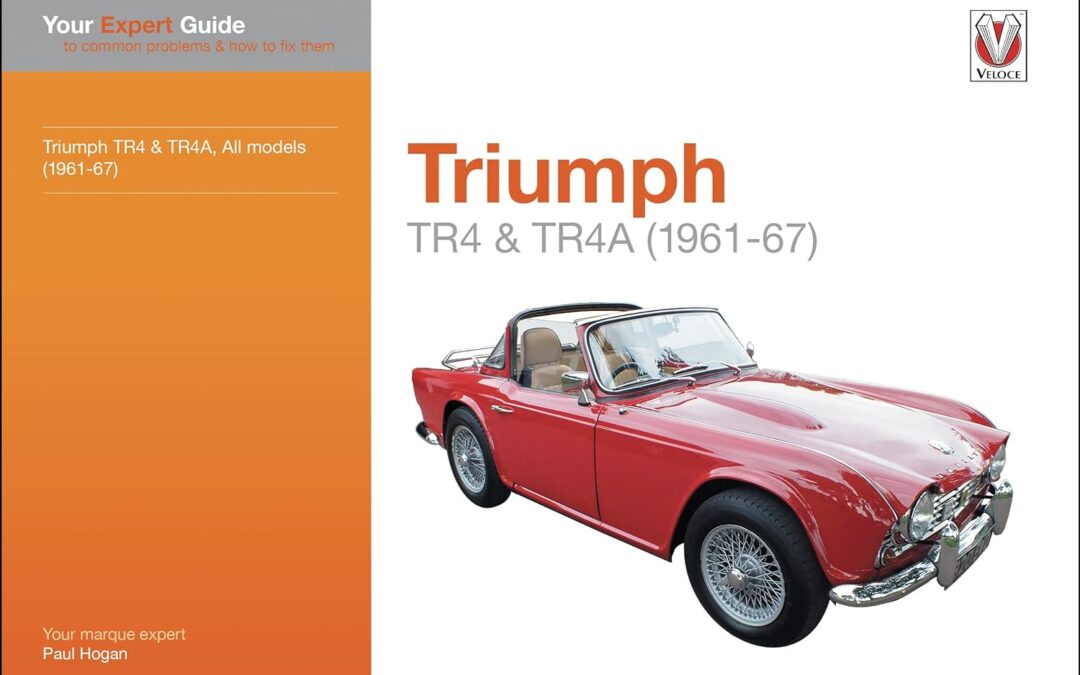
The TR4 represented a new breed of British sports car. Its modern lines, and accessories, such as wind-up windows and face-level ventilation, were a big departure from the earlier TR3 models. While TR4 mechanical parts may not have been new, the introduction of IRS (independent rear suspension) on the TR4A set a new benchmark for sports cars of that era. Performance was solid, if not spectacular, with 109 mph attainable in overdrive top, and these TRs found a ready market in all parts of the world. Now nearly 60 years old, the TR4 and TR4A still attract a huge following worldwide. This book is designed to offer owners and potential owners of these cars an insight to the common problems that can arise and how to fix them, and often making an improvement at the same time. Arranged into easy to follow sections – engine, driveline, suspension, etc – you can see not only where the problems arise, but how to solve them. Information is also provided on owners’ clubs and spares suppliers to help keep your car in good condition and on the road.

- The ultimate insider’s guide to Los Angeles; features interesting and unusual places not found in traditional travel guides
- Part of the international 111 Places/Shops series with over 650 titles and 3.8 million copies in print worldwide
- Appeals to both the local market (nearly 10 million call Los Angeles home) and the tourist market (over 42 million people visit Los Angeles every year)
- Fully illustrated with 111 full-page color photographs
- A revised and updated edition
“In Los Angeles, everyone is a star.” – Denzel Washington
For more than a century, seekers of sun and celebrity from around the world have flocked to this sprawling metropolis on the Pacific, which Dorothy Parker once described as “72 suburbs in search of a city.” But beyond the red-carpet reputation and Tinseltown trappings is a west coast wonderland teeming with unexpected cultural experiences, iconic architecture, gorgeous open spaces, quirky museums, hidden vistas, unconventional art, and obscure stories about the starlets, moguls, personalities, and players who have made Los Angeles their playground. This unusual guidebook explores 111 of the city’s most interesting and unknown places and experiences: wander a serpentine path in a spiritual quest of your own making; channel your inner cowboy at a tried and true honky tonk bar; pay homage to the Dude at the bungalow where the big Lebowski lived; turn your car tires into musical instruments on the country’s only ‘musical’ road; sleep with the ghosts of Marilyn Monroe and Charlie Chaplin; view a constellation of stars more vivid than anything Hollywood has to offer. From the San Gabriel Mountains to the Pacific Ocean, Angelenos and visitors will fall in love with the real Los Angeles. Adventures beckon. Surprises await. Just imagine how much more scintillating your dinner-party storytelling will be
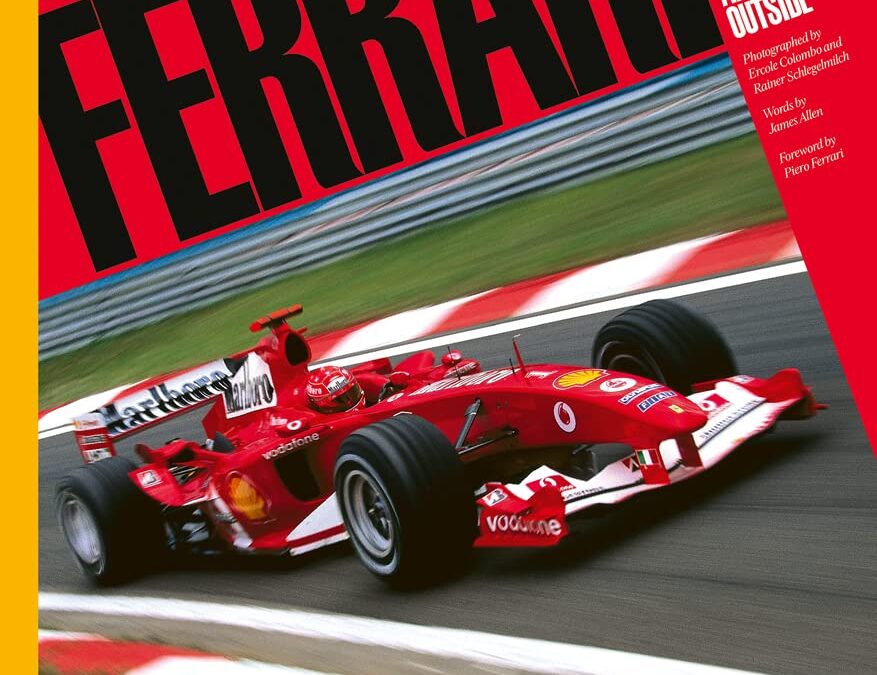
- Ferrari Formula 1 through the lenses of two legendary photographers
- Featuring hundreds of stunning photographs, many rarely seen
- Contributions from iconic figures including Piero Ferrari, Luca di Montezemolo, Stefano Domenicali, Jean Todt and legendary designer Mauro Forghieri
- A must-have book for the Ferrari fan
Ferrari is the beating heart of the global sporting phenomenon that is Formula 1. Its founder, Enzo Ferrari, was born on the racetrack as a competition driver before he became a creator of mythical road cars. No other team can inspire the passion or match the stories of triumph and tragedy. Rainer Schlegelmilch and Ercole Colombo are two of Formula 1’s most legendary photographers. They covered the sport from the 1960s onwards, with amazing access inside the Scuderia. Here, for the first time, they come together to pay tribute to Formula 1’s most iconic team. Ferrari: From Inside and Outside features contributions from iconic figures including Piero Ferrari, Luca di Montezemolo, Stefano Domenicali, Jean Todt and legendary designer Mauro Forghieri. The book is edited by internationally celebrated Formula 1 commentator and Michael Schumacher’s biographer, James Allen.
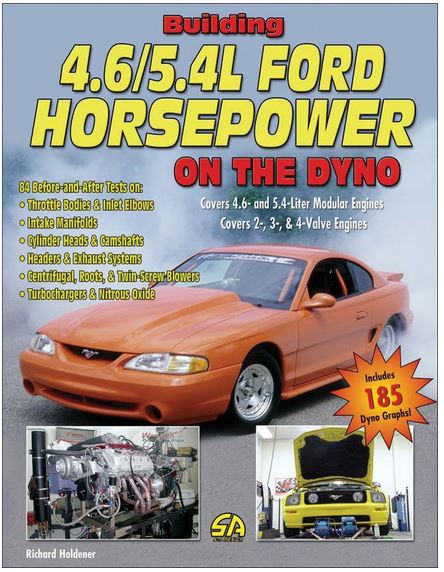
The 4.6- and 5.4-liter modular Ford engines are finally catching up with the legendary 5.0L in terms of aftermarket support and performance parts availability. Having a lot of parts to choose from is great for the enthusiast, but it can also make it harder to figure out what parts and modifications will work best. Building 4.6/5.4L Ford Horsepower on the Dyno takes the guesswork out of modification and parts selection by showing you the types of horsepower and torque gains expected by each modification.
Author Richard Holdener uses over 340 photos and 185 back-to-back dyno graphs to show you which parts increase horsepower and torque, and which parts don’t deliver on their promises. Unlike sources that only give you peak numbers and gains, Building 4.6/5.4L Ford Horsepower on the Dyno includes complete before-and-after dyno graphs, so you can see where in the RPM range these parts make (or lose) the most horsepower and torque. Holdener covers upgrades for 2-, 3-, and 4-valve modular engines, with chapters on throttle bodies and inlet elbows, intake manifolds, cylinder heads, camshafts, nitrous oxide, supercharging, turbocharging, headers, exhaust systems, and complete engine buildups.



